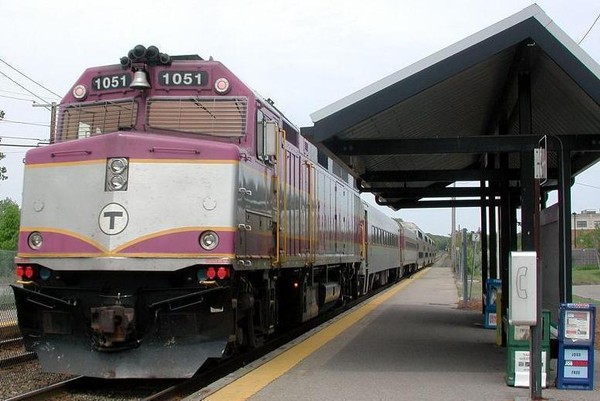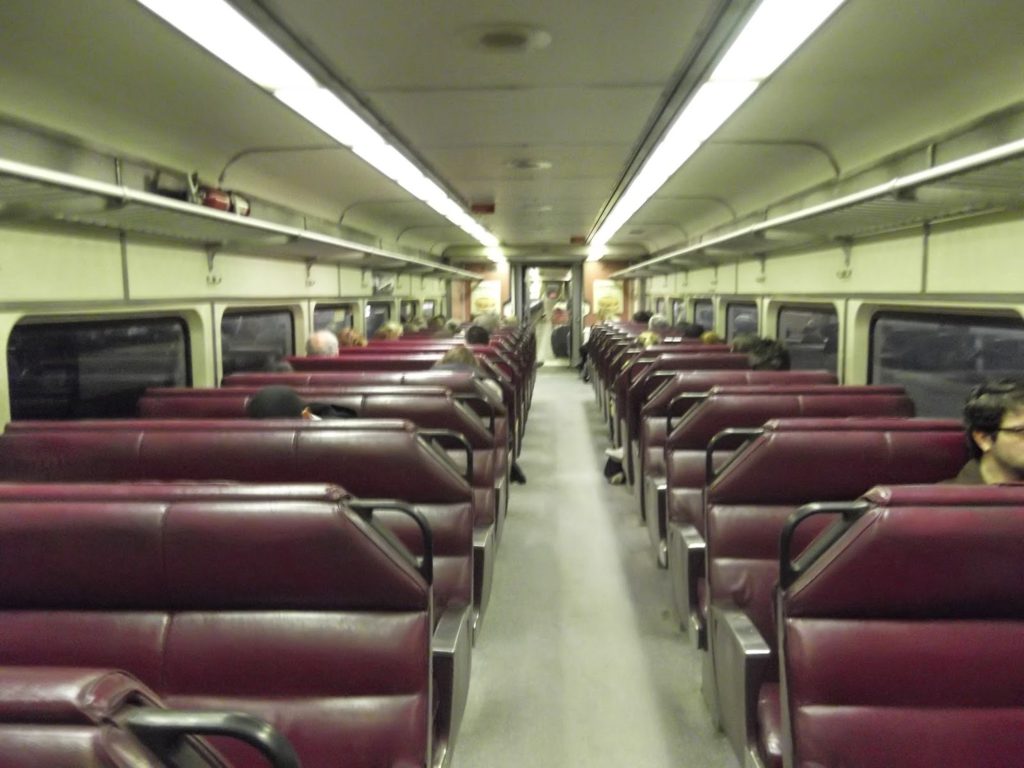Facts about Commuter Rail from Andrew Cline of the Josiah Bartlett Center.
A Skeptic’s Guide to Commuter Rail Boosterism.
To promote taxpayer funding of a quarter-billion dollar commuter rail project, supporters last week touted a single poll question, without context, that appeared to show strong public support for commuter rail. It’s a tactic rail enthusiasts have repeated for years. Journalists, lawmakers and the public should be skeptical. This brief run-through of the complex commuter rail issue shows how misleading such PR boosterism can be.
Everyone should be wary of any poll that purports to show broad support for an expensive public policy without mentioning costs or alternatives. In some cases, it’s useful to know whether people favor or disfavor an abstract concept. But when a specific policy with known costs is being polled, it’s helpful to ask whether people are willing to pay for the nice idea in question.
Every issue involves trade-offs, which abstract poll questions often miss.
The St. Anselm College poll question asked, simply: “Would you support or oppose commuter rail connecting Manchester or Nashua with Boston?” Unsurprisingly, three-fourths of respondents (75.5 percent) were in favor. This is similar to a 2015 poll that found 74 percent support for commuter rail in the abstract. The 2015 poll was promoted by the New Hampshire Rail Transit Authority, the second by N.H. Business for Rail Expansion.
Advocacy groups are using abstract poll questions to promote a specific project, the taxpayer-funded, state-developed Capitol Corridor Rail Expansion Project.
But the public is not being asked about any details of this project.
Journalists and lawmakers should consider whether they would publish a story or cast a vote after asking only a single, generic question. Asking whether people would prefer commuter rail in the abstract is like asking if people would prefer to eat ice cream every day. Of course they would. But their answers will change if asked to weigh the trade-offs.
Costs
The state Department of Transportation’s final report on the Capitol Corridor project included multiple rail options. For these options, the “final capital costs range from $120.3-$256.5 million, incremental O& M from $4.1 to $10.8 million,” the report concluded. (O& M means operations and management.) It would be easy for the projected cost to be incorporated into one poll question.
For example: “Do you support spending up to $256 million in public funds to build a New Hampshire-Boston commuter rail line that would cost up to $11 million a year in taxpayer funds to operate?” When reporting on this issue, journalists might consider asking commuter rail boosters why they don’t put the question this way.
Tax increases
The DOT’s report noted that federal funds would cover most of the capital costs, but that matching state funds of about 20 percent were generally expected, depending on the types of federal funds used. It also stated that operations and maintenance costs would be a state responsibility. To cover those costs, it recommended several new taxes and fees. Poll respondents were not asked whether they would still support commuter rail if it came with any of these or other taxes or fees.
Traffic impact
Commuter rail is sold as a way to reduce traffic congestion on crowded highways. But the state’s own study shows that commuter rail will have little if any discernible impact on highway traffic congestion. Shouldn’t people know that when asked whether they would support commuter rail?
The DOT’s study estimated daily commuter rail ridership at 3,130 for the Manchester Regional Commuter Rail line and 1,170 for a Nashua line. The upper end figures (best case scenario) were 4,170 for a Manchester line and 1,540 for a Nashua line.
The DOT’s latest traffic data show 109,000 vehicle trips per day on I-93 in Salem and 112,000 on the F.E. Everett Turnpike in Nashua. At best, a Manchester commuter rail line might reduce traffic on I-93 by 0.38 percent, while a Nashua line might reduce traffic on the F.E. Everett Turnpike in Nashua by 0.14 percent.
The Capitol Corridor study also stated that the Intercity 8 service option connecting Concord to Lowell, Mass., offering four round-trip rides per day, would attract an estimated 172,645 passengers per year. That is only 473 riders per day. With 221,000 vehicle trips per day on the two main commuter highways, that is hardly enough ridership to produce a noticeable reduction in traffic congestion.
If people were told what the state’s own study found about commuter rail’s potential impact on traffic congestion, might the responses look different?
Commute times
The public might be under the impression that commuter rail would reduce commuting times to and from Boston. The Capitol Corridor study concluded that total travel time from Concord to Boston’s North Station would be 96 minutes.
Google Maps estimates the driving time between the Concord park-and-ride lot on Route 3A and North Station in the middle of a Wednesday afternoon at… 96 minutes. Told that passenger rail might not reduce commute times, perhaps public support would remain high. Or perhaps not.
Zoning changes
Researchers at the University of California Transportation Center recently studied the relationship between commuter rail cost-effectiveness and population density. They found that a cost-effective rail line for a mid-sized city should meet three criteria: 1) a minimum population density of 14 people per acre and 100,000 jobs within a half-mile of the station, and a capital cost per mile of $25 million or less.
Manchester and Nashua have population densities nowhere near that minimum threshold. State data show that Manchester has about 5 and Nashua has about 4.5 people per acre. Though both cities have some scattered pockets of greater density, neither has a consistent, highly dense population plus 100,000 jobs within a half-mile of a potential train station. Nashua’s entire civilian labor force is only 49,000; Manchester’s is only 62,000.
This is why the state’s Capitol Corridor study suggested that land use changes would be needed to create more density near any train station.
People living in those areas should know that this would be part of a commuter rail plan.
Effect on other infrastructure
A state-run commuter rail line would cost state money to operate and maintain. If not financed by a new tax or fee, operating funds would have to come from existing revenues, such as lottery revenue, business taxes or fuel taxes. That would require a reduction in spending elsewhere in the state budget. Poll respondents should be asked about these tradeoffs.
Without asking about alternatives, a poll supposedly showing high support for “commuter rail” doesn’t tell policymakers very much. A good poll would give people options.
In fact, the DOT’s Capitol Corridor study offered five commuter options, including two bus service alternatives. The study showed that expanded bus service was vastly less expensive than rail. Bus options had “final capital costs ranging from $7.4$17 million, incremental O& M from $0-$3 million,” the report concluded.
We don’t know whether people would prefer public rail to public bus service because the polls never asked the question.
Ridership
The most obvious question not asked in these commuter rail polls is this: “How often would you ride a commuter train to Boston?” The answer obviously would be affected by ticket costs. The question could incorporate a range of ticket prices. It also could incorporate a range of stations.
But because the questions ask only whether people support an abstract concept, we have no idea how many Granite Staters have any intention of actually using a commuter rail line to Boston.
Conclusion
Before accepting at face value a single, out-of-context poll result, some skepticism is warranted.
When it comes to commuter rail, advocacy polling so far has told us only that people like the general concept of having a commuter rail option to Boston. It has told us nothing about which of several competing alternatives people might prefer, whether their preference would change once costs and other considerations are factored in, or whether they have any intention of using the train themselves.
It is premature to conclude that they support any specific commuter rail project.
Andrew Cline is president of the Josiah Bartlett Center for Public Policy.
Click here to link to the article at the Josiah Bartlett Center website.
Click here to download the Josiah Bartlett Center article.


